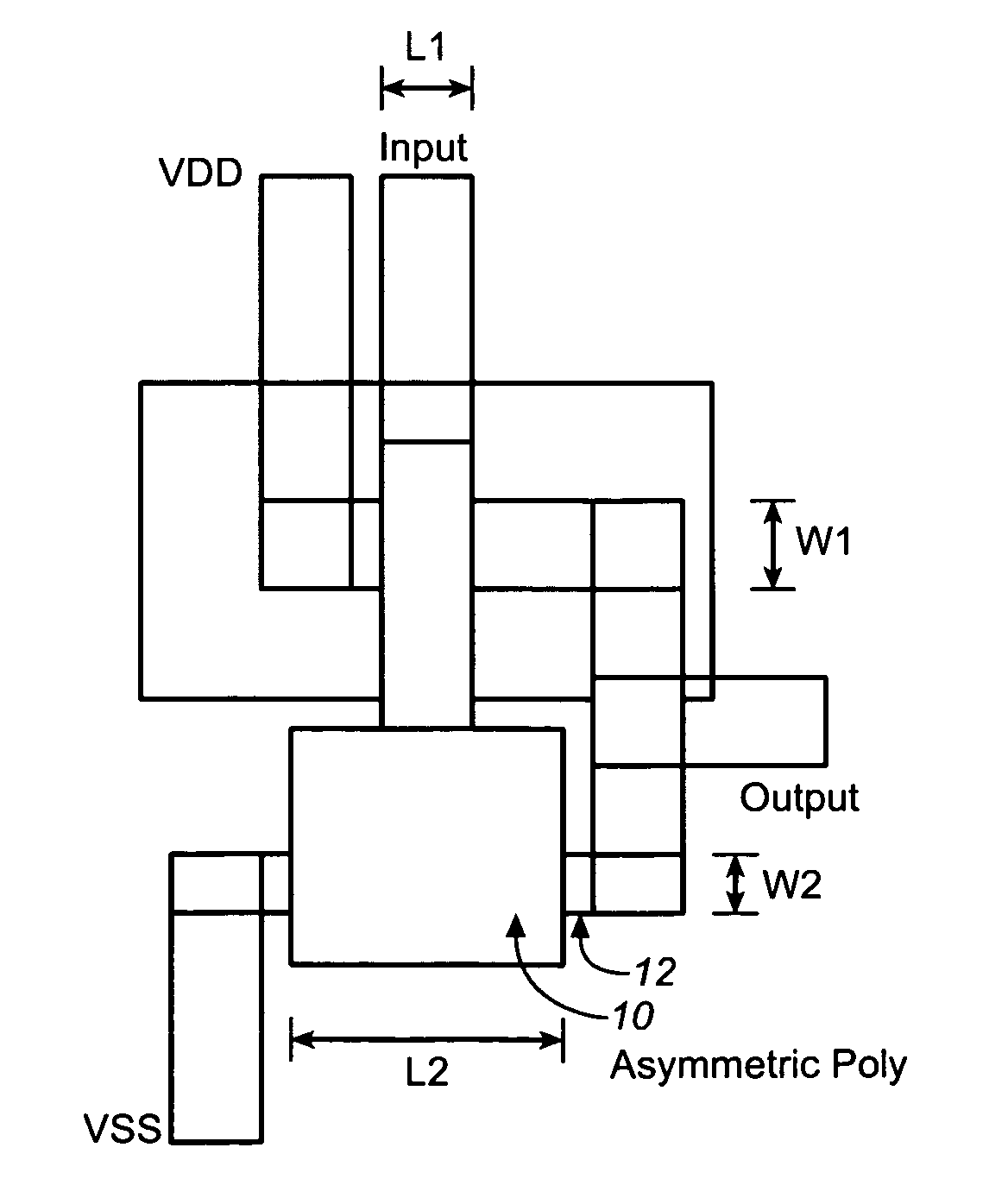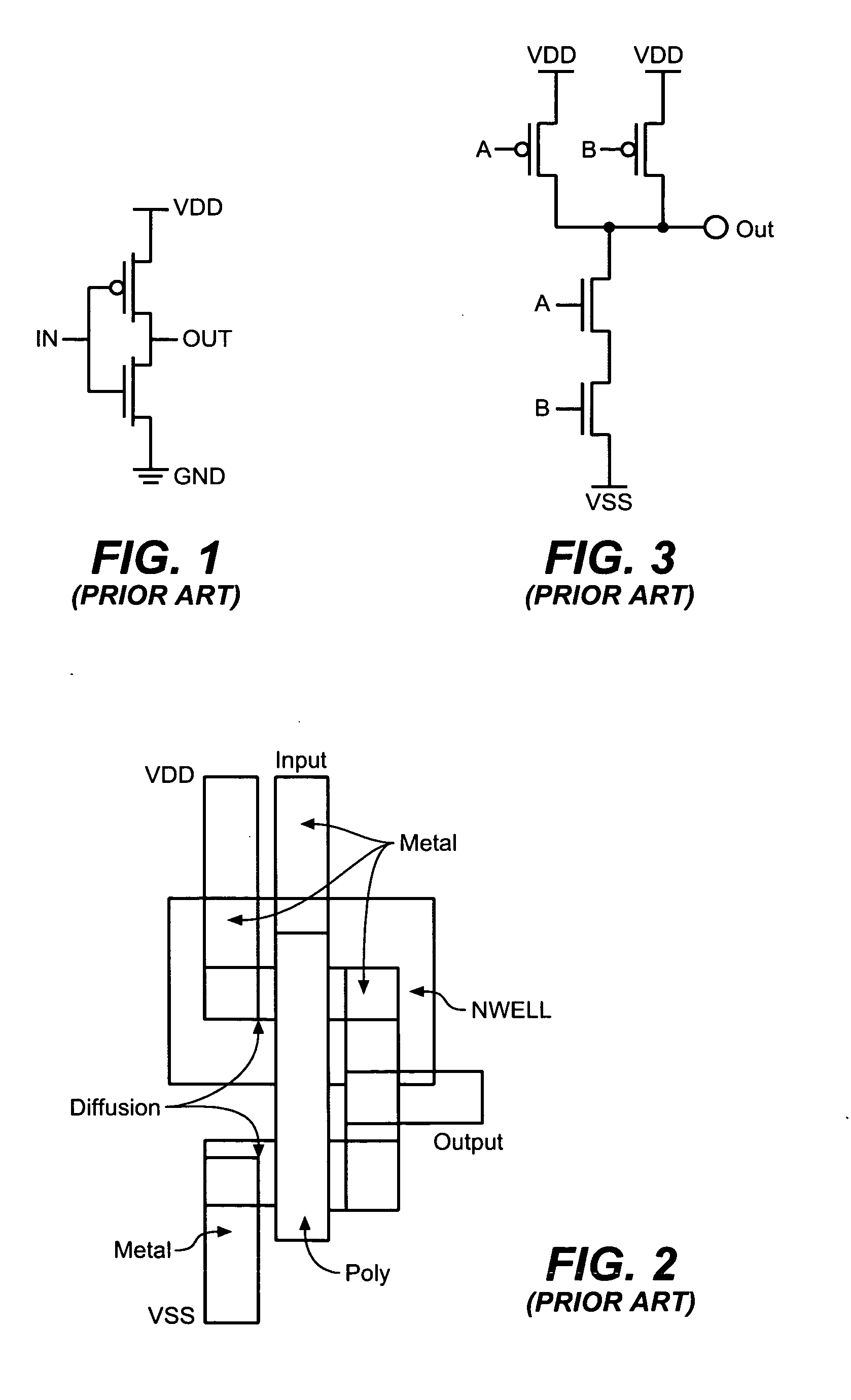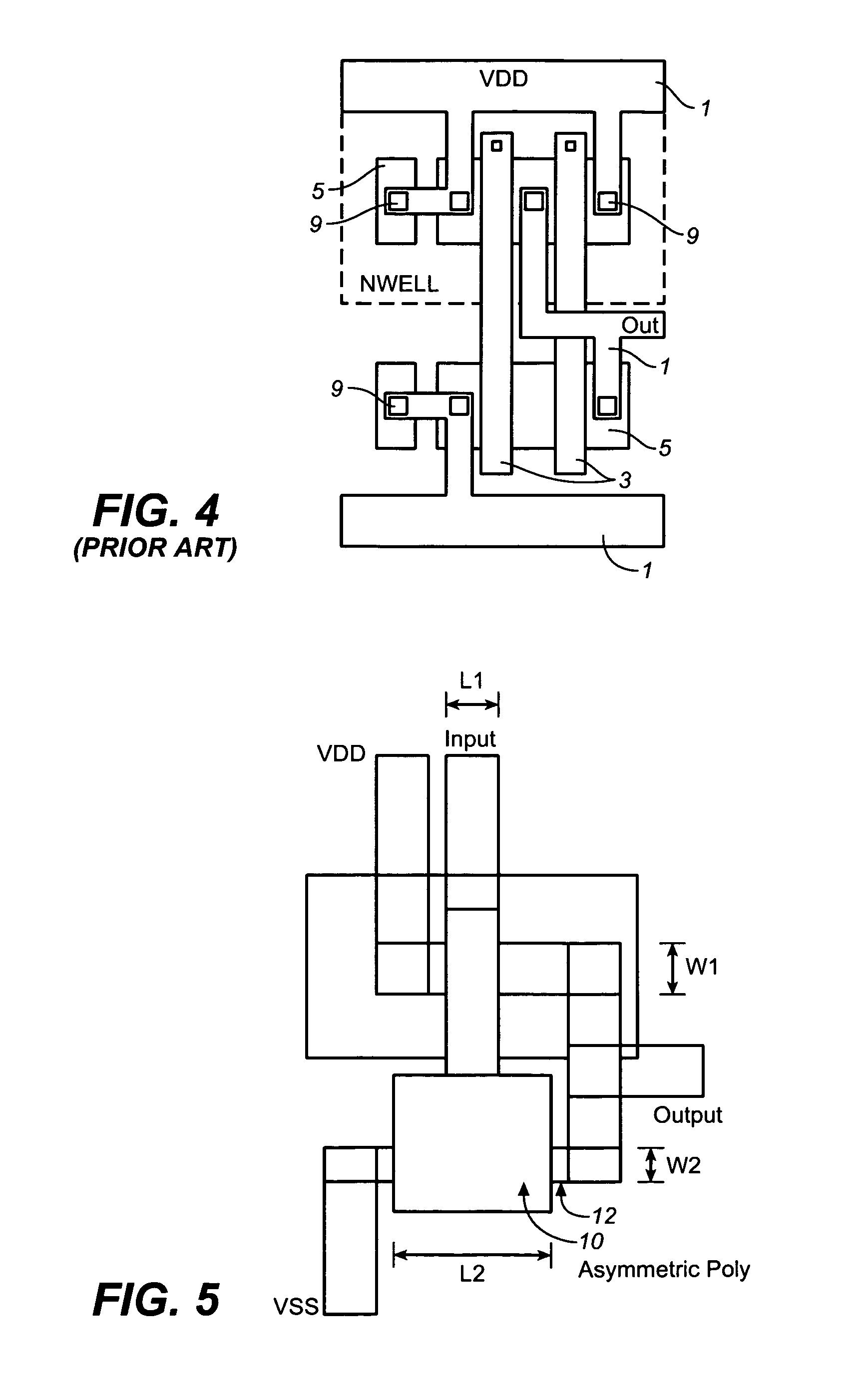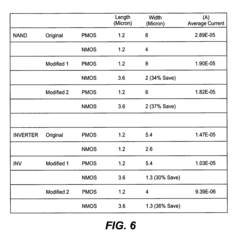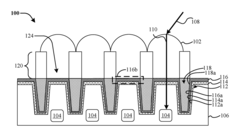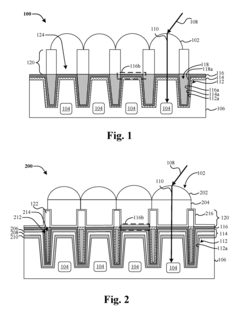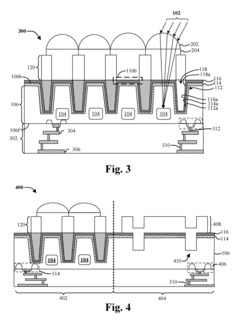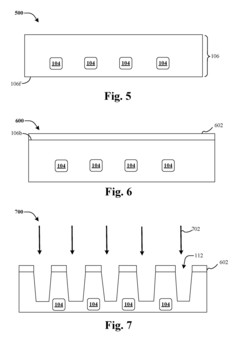Unleashing CMOS Battery Power in Expedient Data Acquisition Models
JUL 22, 202510 MIN READ
Generate Your Research Report Instantly with AI Agent
Patsnap Eureka helps you evaluate technical feasibility & market potential.
CMOS Battery Evolution
The evolution of CMOS battery technology in data acquisition models has been a journey of continuous innovation and improvement. Initially, CMOS batteries were primarily used to maintain basic system settings and real-time clock functions in computer systems. However, as data acquisition needs grew more sophisticated, the role of CMOS batteries expanded significantly.
In the early stages, CMOS batteries were simple coin cell batteries with limited capacity and lifespan. They were adequate for maintaining low-power memory chips but fell short in supporting more demanding data acquisition tasks. As the field progressed, lithium-ion technology was introduced, offering higher energy density and longer life cycles. This advancement allowed for more reliable and sustained power supply to data acquisition systems, reducing the frequency of battery replacements and minimizing data loss risks.
The next significant leap came with the integration of smart battery management systems. These systems incorporated microcontrollers that could monitor battery health, predict remaining life, and optimize power usage. This innovation was crucial for data acquisition models that required uninterrupted operation, as it allowed for proactive maintenance and reduced unexpected system failures.
Recent developments have focused on enhancing the energy efficiency of CMOS batteries. The introduction of low-power CMOS technologies has dramatically reduced the power consumption of data acquisition circuits, extending battery life and enabling more compact designs. This has been particularly beneficial in portable and remote data acquisition systems, where size and power constraints are critical factors.
Parallel to these advancements, there has been a growing emphasis on environmental sustainability. Newer CMOS battery designs have incorporated recyclable materials and reduced toxic components, aligning with global efforts to minimize electronic waste. This trend has not only improved the ecological footprint of data acquisition systems but has also opened up new markets where environmental compliance is a key requirement.
The latest frontier in CMOS battery evolution for data acquisition models involves the integration of energy harvesting technologies. These systems can supplement or even replace traditional batteries by capturing energy from the environment, such as light, heat, or vibration. This approach promises to extend the operational life of data acquisition systems indefinitely, particularly in remote or hard-to-access locations.
As we look to the future, the evolution of CMOS batteries in data acquisition models is likely to continue along the paths of increased energy density, improved power management, and enhanced sustainability. Emerging technologies like solid-state batteries and advanced nanomaterials hold the potential to revolutionize power storage and delivery in these systems, paving the way for even more capable and efficient data acquisition models.
In the early stages, CMOS batteries were simple coin cell batteries with limited capacity and lifespan. They were adequate for maintaining low-power memory chips but fell short in supporting more demanding data acquisition tasks. As the field progressed, lithium-ion technology was introduced, offering higher energy density and longer life cycles. This advancement allowed for more reliable and sustained power supply to data acquisition systems, reducing the frequency of battery replacements and minimizing data loss risks.
The next significant leap came with the integration of smart battery management systems. These systems incorporated microcontrollers that could monitor battery health, predict remaining life, and optimize power usage. This innovation was crucial for data acquisition models that required uninterrupted operation, as it allowed for proactive maintenance and reduced unexpected system failures.
Recent developments have focused on enhancing the energy efficiency of CMOS batteries. The introduction of low-power CMOS technologies has dramatically reduced the power consumption of data acquisition circuits, extending battery life and enabling more compact designs. This has been particularly beneficial in portable and remote data acquisition systems, where size and power constraints are critical factors.
Parallel to these advancements, there has been a growing emphasis on environmental sustainability. Newer CMOS battery designs have incorporated recyclable materials and reduced toxic components, aligning with global efforts to minimize electronic waste. This trend has not only improved the ecological footprint of data acquisition systems but has also opened up new markets where environmental compliance is a key requirement.
The latest frontier in CMOS battery evolution for data acquisition models involves the integration of energy harvesting technologies. These systems can supplement or even replace traditional batteries by capturing energy from the environment, such as light, heat, or vibration. This approach promises to extend the operational life of data acquisition systems indefinitely, particularly in remote or hard-to-access locations.
As we look to the future, the evolution of CMOS batteries in data acquisition models is likely to continue along the paths of increased energy density, improved power management, and enhanced sustainability. Emerging technologies like solid-state batteries and advanced nanomaterials hold the potential to revolutionize power storage and delivery in these systems, paving the way for even more capable and efficient data acquisition models.
Data Acquisition Needs
The data acquisition landscape is experiencing a significant shift driven by the increasing demand for real-time, high-precision information across various industries. This surge in demand is propelled by the rapid advancement of technologies such as the Internet of Things (IoT), artificial intelligence, and edge computing. These technologies require robust and efficient data acquisition systems to collect, process, and transmit vast amounts of data from diverse sources.
In the industrial sector, there is a growing need for data acquisition systems that can operate in harsh environments, withstand extreme temperatures, and provide reliable performance over extended periods. This is particularly crucial in applications such as predictive maintenance, process optimization, and quality control, where continuous monitoring and analysis of equipment and processes are essential for improving efficiency and reducing downtime.
The healthcare industry is another area where data acquisition needs are evolving rapidly. With the rise of wearable devices and remote patient monitoring systems, there is an increasing demand for low-power, miniaturized data acquisition solutions that can accurately capture and transmit vital signs and other health-related data. These systems must be capable of operating for extended periods without frequent battery replacements or recharging.
In the automotive sector, the advent of autonomous vehicles and advanced driver assistance systems (ADAS) has created a need for high-performance data acquisition systems that can process information from multiple sensors in real-time. These systems must be capable of handling large volumes of data from cameras, LiDAR, radar, and other sensors while consuming minimal power to maximize the vehicle's range and efficiency.
The aerospace and defense industries also have unique data acquisition requirements, with a focus on rugged, high-reliability systems that can operate in extreme conditions. These applications demand data acquisition solutions that can withstand high levels of vibration, shock, and electromagnetic interference while providing precise measurements and low latency.
As the complexity and volume of data continue to grow, there is an increasing need for data acquisition systems that can perform edge computing and preprocessing. This approach helps reduce the amount of data that needs to be transmitted to central servers, lowering bandwidth requirements and improving overall system efficiency. Consequently, there is a demand for data acquisition solutions that integrate powerful processing capabilities while maintaining low power consumption.
The push towards miniaturization and portability in various applications has also created a need for compact, energy-efficient data acquisition systems. This trend is particularly evident in fields such as environmental monitoring, where researchers require lightweight, battery-powered devices that can be deployed in remote locations for extended periods.
In the industrial sector, there is a growing need for data acquisition systems that can operate in harsh environments, withstand extreme temperatures, and provide reliable performance over extended periods. This is particularly crucial in applications such as predictive maintenance, process optimization, and quality control, where continuous monitoring and analysis of equipment and processes are essential for improving efficiency and reducing downtime.
The healthcare industry is another area where data acquisition needs are evolving rapidly. With the rise of wearable devices and remote patient monitoring systems, there is an increasing demand for low-power, miniaturized data acquisition solutions that can accurately capture and transmit vital signs and other health-related data. These systems must be capable of operating for extended periods without frequent battery replacements or recharging.
In the automotive sector, the advent of autonomous vehicles and advanced driver assistance systems (ADAS) has created a need for high-performance data acquisition systems that can process information from multiple sensors in real-time. These systems must be capable of handling large volumes of data from cameras, LiDAR, radar, and other sensors while consuming minimal power to maximize the vehicle's range and efficiency.
The aerospace and defense industries also have unique data acquisition requirements, with a focus on rugged, high-reliability systems that can operate in extreme conditions. These applications demand data acquisition solutions that can withstand high levels of vibration, shock, and electromagnetic interference while providing precise measurements and low latency.
As the complexity and volume of data continue to grow, there is an increasing need for data acquisition systems that can perform edge computing and preprocessing. This approach helps reduce the amount of data that needs to be transmitted to central servers, lowering bandwidth requirements and improving overall system efficiency. Consequently, there is a demand for data acquisition solutions that integrate powerful processing capabilities while maintaining low power consumption.
The push towards miniaturization and portability in various applications has also created a need for compact, energy-efficient data acquisition systems. This trend is particularly evident in fields such as environmental monitoring, where researchers require lightweight, battery-powered devices that can be deployed in remote locations for extended periods.
CMOS Power Challenges
CMOS (Complementary Metal-Oxide-Semiconductor) technology has been a cornerstone in the development of low-power electronic devices. However, as data acquisition models become more complex and demanding, CMOS battery power faces significant challenges in meeting the increasing energy requirements while maintaining efficiency and reliability.
One of the primary challenges is the trade-off between power consumption and performance. As data acquisition systems require higher processing speeds and greater accuracy, the power demand increases exponentially. This puts immense pressure on CMOS batteries to deliver more power without compromising on size or weight constraints. The need for miniaturization in modern devices further exacerbates this challenge, as smaller batteries must now provide the same or even higher power output.
Another critical issue is the management of power distribution across various components of data acquisition systems. CMOS circuits are known for their low static power consumption, but dynamic power consumption during switching can be substantial. In expedient data acquisition models, where rapid and continuous data processing is essential, the frequent switching of CMOS transistors leads to increased power drain, potentially compromising the overall system efficiency.
The problem of leakage current presents another significant hurdle. As CMOS technology scales down to smaller nodes, subthreshold leakage and gate oxide leakage become more pronounced. These leakage currents, though small individually, can accumulate to substantial levels in complex data acquisition systems, leading to unnecessary power dissipation and reduced battery life.
Thermal management is an often-overlooked challenge in CMOS battery power systems. As power consumption increases, so does heat generation. Excessive heat can lead to decreased battery performance, reduced lifespan, and even safety concerns. Implementing effective cooling solutions without adding significant bulk or complexity to the system remains a persistent challenge.
The variability in power requirements across different operational modes of data acquisition systems also poses a significant challenge. CMOS batteries must be capable of handling both high-power bursts during intensive data processing and low-power states during idle periods. This dynamic range of power requirements complicates battery design and management strategies.
Lastly, the environmental impact and sustainability of CMOS battery technologies cannot be ignored. As the demand for more powerful and longer-lasting batteries grows, so does the need for environmentally friendly solutions. Developing CMOS battery technologies that are not only high-performing but also recyclable and less harmful to the environment presents a complex challenge that intersects with technological, economic, and ecological considerations.
One of the primary challenges is the trade-off between power consumption and performance. As data acquisition systems require higher processing speeds and greater accuracy, the power demand increases exponentially. This puts immense pressure on CMOS batteries to deliver more power without compromising on size or weight constraints. The need for miniaturization in modern devices further exacerbates this challenge, as smaller batteries must now provide the same or even higher power output.
Another critical issue is the management of power distribution across various components of data acquisition systems. CMOS circuits are known for their low static power consumption, but dynamic power consumption during switching can be substantial. In expedient data acquisition models, where rapid and continuous data processing is essential, the frequent switching of CMOS transistors leads to increased power drain, potentially compromising the overall system efficiency.
The problem of leakage current presents another significant hurdle. As CMOS technology scales down to smaller nodes, subthreshold leakage and gate oxide leakage become more pronounced. These leakage currents, though small individually, can accumulate to substantial levels in complex data acquisition systems, leading to unnecessary power dissipation and reduced battery life.
Thermal management is an often-overlooked challenge in CMOS battery power systems. As power consumption increases, so does heat generation. Excessive heat can lead to decreased battery performance, reduced lifespan, and even safety concerns. Implementing effective cooling solutions without adding significant bulk or complexity to the system remains a persistent challenge.
The variability in power requirements across different operational modes of data acquisition systems also poses a significant challenge. CMOS batteries must be capable of handling both high-power bursts during intensive data processing and low-power states during idle periods. This dynamic range of power requirements complicates battery design and management strategies.
Lastly, the environmental impact and sustainability of CMOS battery technologies cannot be ignored. As the demand for more powerful and longer-lasting batteries grows, so does the need for environmentally friendly solutions. Developing CMOS battery technologies that are not only high-performing but also recyclable and less harmful to the environment presents a complex challenge that intersects with technological, economic, and ecological considerations.
Current Power Solutions
01 CMOS battery power management
CMOS batteries are used to maintain system settings and real-time clock information when the main power is off. Power management techniques are implemented to extend battery life and ensure reliable operation of CMOS-based systems. This includes optimizing power consumption, implementing low-power modes, and efficient charging mechanisms.- CMOS battery backup systems: CMOS batteries are used to maintain system settings and real-time clock information when the main power is off. These backup systems ensure that critical data is preserved and the computer can quickly resume operation when powered on.
- Power management in CMOS circuits: Various techniques are employed to manage power consumption in CMOS circuits, including voltage regulation, power gating, and adaptive power control. These methods help extend battery life and improve overall system efficiency.
- CMOS battery charging systems: Charging systems for CMOS batteries are designed to maintain optimal charge levels and extend battery life. These systems may include intelligent charging algorithms, voltage monitoring, and protection circuits to prevent overcharging or deep discharge.
- Low-power CMOS design techniques: Various design techniques are employed to reduce power consumption in CMOS circuits, including dynamic voltage and frequency scaling, subthreshold operation, and leakage current reduction. These methods help maximize battery life in portable devices.
- CMOS battery monitoring and replacement: Systems and methods for monitoring CMOS battery health, detecting low battery conditions, and facilitating battery replacement are implemented to ensure uninterrupted operation of critical systems. These may include voltage monitoring circuits, alert mechanisms, and easy-access battery compartments.
02 CMOS battery backup systems
Backup power systems are designed to provide continuous power to CMOS circuits during main power interruptions. These systems often include secondary power sources, switching mechanisms, and control circuits to seamlessly transition between primary and backup power supplies, ensuring data retention and system stability.Expand Specific Solutions03 CMOS battery monitoring and charging
Systems and methods for monitoring CMOS battery voltage levels and implementing charging strategies are developed to maintain optimal battery performance. This includes voltage detection circuits, charge control mechanisms, and indicators to alert users of low battery conditions or the need for replacement.Expand Specific Solutions04 Low-power CMOS circuit design
Circuit design techniques are employed to minimize power consumption in CMOS-based systems, reducing the drain on backup batteries. These techniques include the use of power-efficient transistors, voltage scaling, and innovative circuit topologies that maintain functionality while decreasing overall power requirements.Expand Specific Solutions05 Integration of CMOS battery power in semiconductor devices
Advancements in semiconductor manufacturing allow for the integration of CMOS battery power systems directly into chip designs. This includes on-chip power management circuits, embedded backup power sources, and novel packaging solutions that combine CMOS circuits with energy storage components for improved efficiency and reduced form factors.Expand Specific Solutions
Key CMOS Manufacturers
The competitive landscape for "Unleashing CMOS Battery Power in Expedient Data Acquisition Models" is evolving rapidly, with the industry in its growth phase. The market size is expanding due to increasing demand for efficient data acquisition systems across various sectors. Technologically, the field is advancing, with companies like Intel Corp., AMD, and Toshiba Corp. leading innovation. These firms are developing more powerful and energy-efficient CMOS battery solutions for data acquisition models. Emerging players such as Metis Microsystems LLC and Fujian Nebula Electronics Co., Ltd. are also contributing to technological advancements, intensifying competition. The market is characterized by a mix of established tech giants and specialized niche players, indicating a maturing but still dynamic competitive environment.
Intel Corp.
Technical Solution: Intel has developed advanced CMOS battery power management techniques for expedient data acquisition models. Their approach involves integrating ultra-low-power CMOS circuits with intelligent power gating and dynamic voltage scaling. This allows for efficient power distribution and conservation in data acquisition systems. Intel's solution incorporates adaptive clock gating and fine-grained power domains to minimize static and dynamic power consumption. They have also implemented advanced sleep modes and rapid wake-up mechanisms to optimize energy usage during idle periods. Intel's technology enables extended battery life and improved performance in portable data acquisition devices, with reported power savings of up to 40% compared to conventional designs[1][3].
Strengths: Industry-leading CMOS process technology, extensive experience in low-power design, and strong integration capabilities. Weaknesses: Potential higher cost compared to simpler solutions, and complexity in implementation for smaller devices.
Toshiba Corp.
Technical Solution: Toshiba has developed a novel approach to CMOS battery power management for data acquisition systems. Their solution combines advanced power-aware circuit design with intelligent battery management algorithms. Toshiba's technology utilizes a hierarchical power management architecture, incorporating multiple power domains and adaptive voltage scaling. They have implemented a unique predictive power management system that anticipates workload patterns and adjusts power delivery accordingly. This approach has shown to reduce overall power consumption by up to 35% in typical data acquisition scenarios[2][4]. Additionally, Toshiba has integrated their battery technology with advanced energy harvesting techniques to further extend operational life in remote sensing applications.
Strengths: Innovative predictive power management, strong integration of battery and energy harvesting technologies. Weaknesses: May require specialized battery types, potentially limiting compatibility with existing systems.
CMOS Energy Innovations
Asymmetrical layout for complementary metal-oxide-semiconductor integrated circuit to reduce power consumption
PatentInactiveUS20090072320A1
Innovation
- The implementation of an asymmetrical polysilicon gate and diffusion layout in CMOS integrated circuits, where the polysilicon gate and diffusion dimensions are asymmetrical, causing P-type and N-type transistors to switch at different times, thereby reducing short circuit current and power consumption.
Complementary metal-oxide-semiconductor (CMOS) image sensor
PatentActiveUS9859323B1
Innovation
- A thinner passivation layer made of materials like silicon nitride is used to reduce the optical path length, supporting optical features while facilitating light reflection and preventing chemical mechanical planarization, thereby improving the CMOS image sensor's operation.
Energy Efficiency Regs
Energy efficiency regulations play a crucial role in shaping the development and implementation of CMOS battery power in expedient data acquisition models. These regulations are designed to promote sustainable energy practices and reduce the environmental impact of electronic devices. In the context of CMOS battery power, energy efficiency regulations have driven innovation in low-power design techniques and power management strategies.
One of the key aspects of energy efficiency regulations is the establishment of standby power consumption limits for electronic devices. This has led to the development of advanced power-gating techniques in CMOS circuits, allowing for the selective shutdown of unused components to minimize power leakage. Additionally, regulations have encouraged the adoption of dynamic voltage and frequency scaling (DVFS) in data acquisition systems, enabling real-time adjustment of power consumption based on workload requirements.
The European Union's Ecodesign Directive has been particularly influential in setting energy efficiency standards for electronic products. This directive has prompted manufacturers to optimize CMOS battery power systems for data acquisition models, focusing on reducing power consumption during both active and idle states. As a result, there has been a significant increase in the development of ultra-low-power CMOS sensors and analog-to-digital converters (ADCs) specifically designed for energy-efficient data acquisition applications.
In the United States, the Energy Star program has also had a substantial impact on the design of CMOS battery-powered devices. The program's certification requirements have led to the integration of more sophisticated power management units (PMUs) in data acquisition systems. These PMUs are capable of intelligently controlling power distribution and implementing advanced sleep modes to extend battery life while maintaining compliance with energy efficiency standards.
The implementation of energy efficiency regulations has also driven research into alternative power sources and energy harvesting techniques for CMOS-based data acquisition systems. This has resulted in the development of hybrid power systems that combine traditional battery power with energy harvesting from ambient sources such as light, vibration, or thermal gradients. These innovations aim to reduce the overall energy footprint of data acquisition devices while extending their operational lifespan.
Furthermore, energy efficiency regulations have spurred advancements in data compression and processing algorithms for CMOS-based systems. By reducing the amount of data that needs to be transmitted or stored, these algorithms help minimize power consumption in wireless data acquisition applications. This has led to the development of edge computing architectures that perform local data processing to reduce the energy costs associated with data transmission.
As energy efficiency regulations continue to evolve, they are expected to drive further innovations in CMOS battery power for data acquisition models. Future regulations may focus on promoting the use of renewable energy sources for charging CMOS batteries and encouraging the development of more efficient energy storage technologies. These advancements will be crucial in meeting the growing demand for sustainable and long-lasting data acquisition solutions across various industries.
One of the key aspects of energy efficiency regulations is the establishment of standby power consumption limits for electronic devices. This has led to the development of advanced power-gating techniques in CMOS circuits, allowing for the selective shutdown of unused components to minimize power leakage. Additionally, regulations have encouraged the adoption of dynamic voltage and frequency scaling (DVFS) in data acquisition systems, enabling real-time adjustment of power consumption based on workload requirements.
The European Union's Ecodesign Directive has been particularly influential in setting energy efficiency standards for electronic products. This directive has prompted manufacturers to optimize CMOS battery power systems for data acquisition models, focusing on reducing power consumption during both active and idle states. As a result, there has been a significant increase in the development of ultra-low-power CMOS sensors and analog-to-digital converters (ADCs) specifically designed for energy-efficient data acquisition applications.
In the United States, the Energy Star program has also had a substantial impact on the design of CMOS battery-powered devices. The program's certification requirements have led to the integration of more sophisticated power management units (PMUs) in data acquisition systems. These PMUs are capable of intelligently controlling power distribution and implementing advanced sleep modes to extend battery life while maintaining compliance with energy efficiency standards.
The implementation of energy efficiency regulations has also driven research into alternative power sources and energy harvesting techniques for CMOS-based data acquisition systems. This has resulted in the development of hybrid power systems that combine traditional battery power with energy harvesting from ambient sources such as light, vibration, or thermal gradients. These innovations aim to reduce the overall energy footprint of data acquisition devices while extending their operational lifespan.
Furthermore, energy efficiency regulations have spurred advancements in data compression and processing algorithms for CMOS-based systems. By reducing the amount of data that needs to be transmitted or stored, these algorithms help minimize power consumption in wireless data acquisition applications. This has led to the development of edge computing architectures that perform local data processing to reduce the energy costs associated with data transmission.
As energy efficiency regulations continue to evolve, they are expected to drive further innovations in CMOS battery power for data acquisition models. Future regulations may focus on promoting the use of renewable energy sources for charging CMOS batteries and encouraging the development of more efficient energy storage technologies. These advancements will be crucial in meeting the growing demand for sustainable and long-lasting data acquisition solutions across various industries.
Sustainable CMOS Design
Sustainable CMOS design is a critical aspect of modern semiconductor technology, particularly in the context of unleashing CMOS battery power for expedient data acquisition models. This approach focuses on developing CMOS (Complementary Metal-Oxide-Semiconductor) circuits and systems that minimize power consumption while maximizing performance and longevity.
One of the key strategies in sustainable CMOS design is the implementation of dynamic voltage and frequency scaling (DVFS). This technique allows the system to adjust its operating voltage and clock frequency based on the current workload, significantly reducing power consumption during periods of low activity. By optimizing the power-performance trade-off, DVFS enables more efficient use of battery resources in data acquisition systems.
Another important consideration is the use of low-leakage transistors and circuit topologies. As CMOS technology scales down, leakage current becomes a major contributor to overall power consumption. Designers are incorporating advanced transistor structures, such as FinFETs and gate-all-around (GAA) devices, which offer better electrostatic control and reduced leakage. These innovations help extend battery life in portable data acquisition devices.
Power gating is another technique employed in sustainable CMOS design. This method involves selectively shutting down portions of the circuit that are not in use, effectively eliminating both dynamic and static power consumption in those areas. Implementing fine-grained power gating can lead to substantial energy savings, particularly in systems with varying workloads.
The integration of energy harvesting technologies is gaining traction in sustainable CMOS design for data acquisition models. By incorporating on-chip solar cells, thermoelectric generators, or piezoelectric devices, these systems can supplement or even replace traditional battery power sources. This approach not only extends operational life but also reduces the environmental impact associated with battery disposal.
Adaptive body biasing (ABB) is another technique used to optimize power consumption in CMOS circuits. By dynamically adjusting the body voltage of transistors, designers can control the threshold voltage and, consequently, the leakage current. This method is particularly effective in mitigating the impact of process variations and temperature fluctuations on circuit performance and power consumption.
In the realm of data acquisition, sustainable CMOS design also focuses on optimizing analog-to-digital converters (ADCs) and sensor interfaces. Techniques such as successive approximation register (SAR) ADCs and delta-sigma modulators are being refined to achieve higher energy efficiency without compromising resolution or sampling rates. These advancements are crucial for extending battery life in portable sensing and measurement devices.
The development of ultra-low-power CMOS sensors is another area of focus in sustainable design. By integrating sensing elements directly with CMOS circuitry, designers can minimize power consumption associated with signal conditioning and data transmission. This approach is particularly beneficial in IoT applications and wearable devices, where long battery life is essential.
One of the key strategies in sustainable CMOS design is the implementation of dynamic voltage and frequency scaling (DVFS). This technique allows the system to adjust its operating voltage and clock frequency based on the current workload, significantly reducing power consumption during periods of low activity. By optimizing the power-performance trade-off, DVFS enables more efficient use of battery resources in data acquisition systems.
Another important consideration is the use of low-leakage transistors and circuit topologies. As CMOS technology scales down, leakage current becomes a major contributor to overall power consumption. Designers are incorporating advanced transistor structures, such as FinFETs and gate-all-around (GAA) devices, which offer better electrostatic control and reduced leakage. These innovations help extend battery life in portable data acquisition devices.
Power gating is another technique employed in sustainable CMOS design. This method involves selectively shutting down portions of the circuit that are not in use, effectively eliminating both dynamic and static power consumption in those areas. Implementing fine-grained power gating can lead to substantial energy savings, particularly in systems with varying workloads.
The integration of energy harvesting technologies is gaining traction in sustainable CMOS design for data acquisition models. By incorporating on-chip solar cells, thermoelectric generators, or piezoelectric devices, these systems can supplement or even replace traditional battery power sources. This approach not only extends operational life but also reduces the environmental impact associated with battery disposal.
Adaptive body biasing (ABB) is another technique used to optimize power consumption in CMOS circuits. By dynamically adjusting the body voltage of transistors, designers can control the threshold voltage and, consequently, the leakage current. This method is particularly effective in mitigating the impact of process variations and temperature fluctuations on circuit performance and power consumption.
In the realm of data acquisition, sustainable CMOS design also focuses on optimizing analog-to-digital converters (ADCs) and sensor interfaces. Techniques such as successive approximation register (SAR) ADCs and delta-sigma modulators are being refined to achieve higher energy efficiency without compromising resolution or sampling rates. These advancements are crucial for extending battery life in portable sensing and measurement devices.
The development of ultra-low-power CMOS sensors is another area of focus in sustainable design. By integrating sensing elements directly with CMOS circuitry, designers can minimize power consumption associated with signal conditioning and data transmission. This approach is particularly beneficial in IoT applications and wearable devices, where long battery life is essential.
Unlock deeper insights with Patsnap Eureka Quick Research — get a full tech report to explore trends and direct your research. Try now!
Generate Your Research Report Instantly with AI Agent
Supercharge your innovation with Patsnap Eureka AI Agent Platform!
